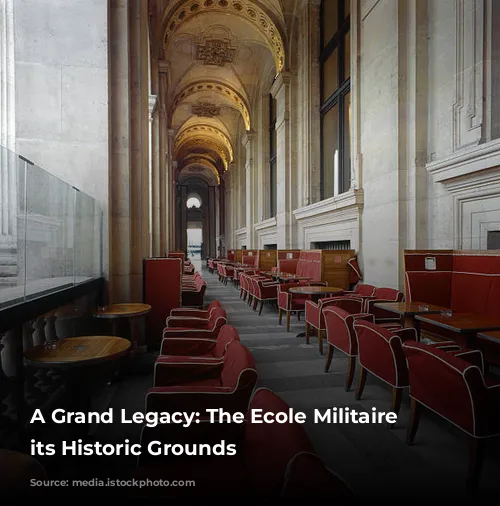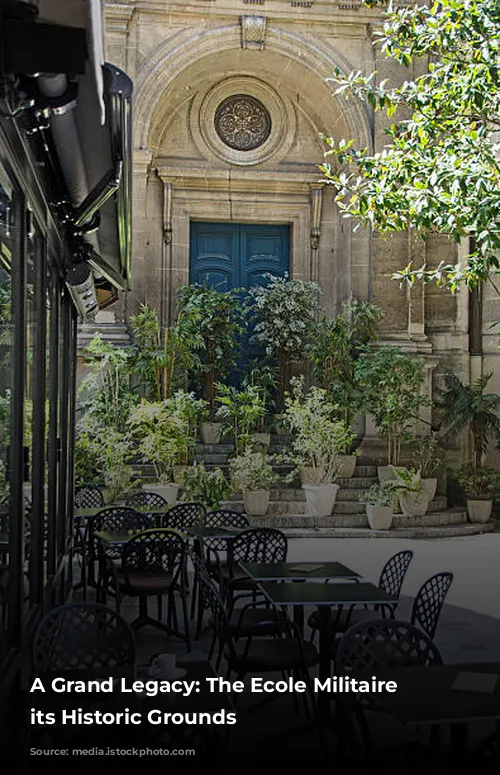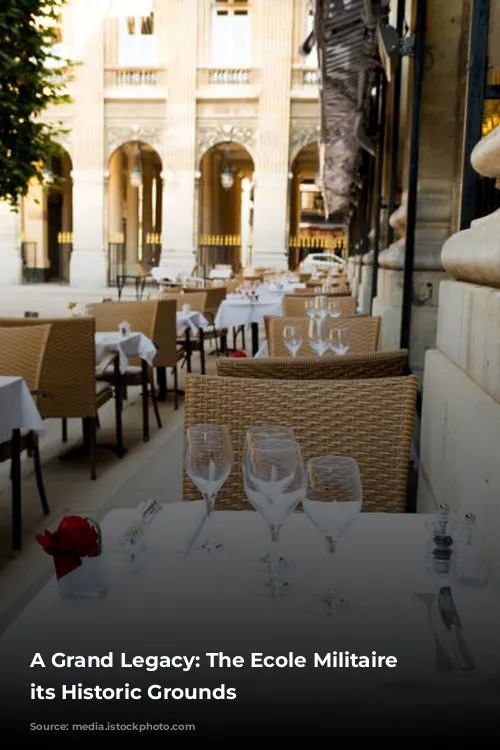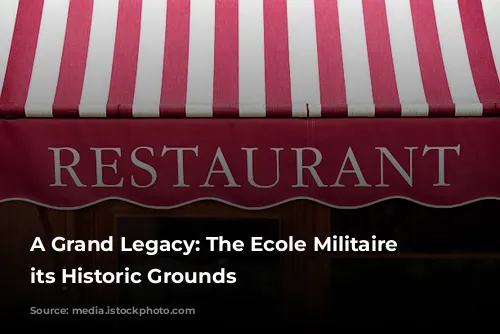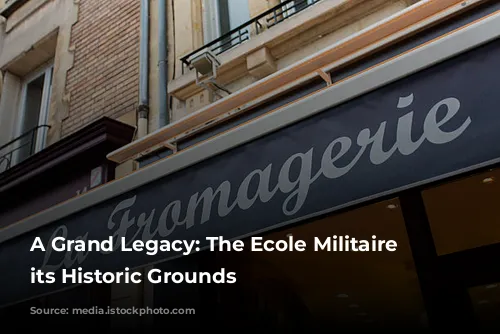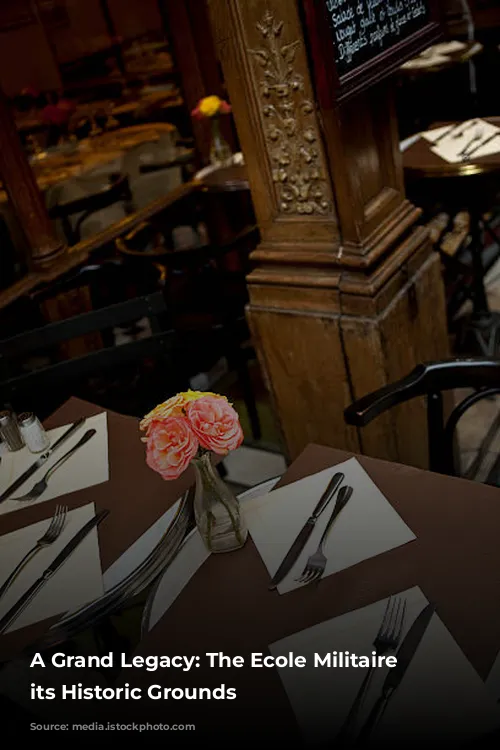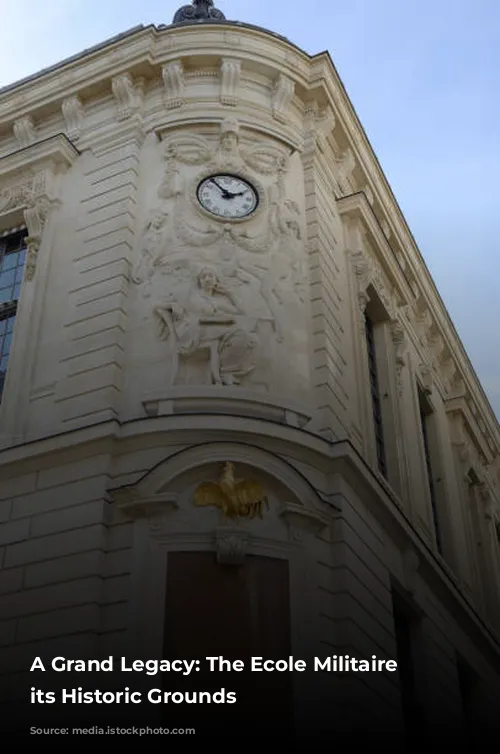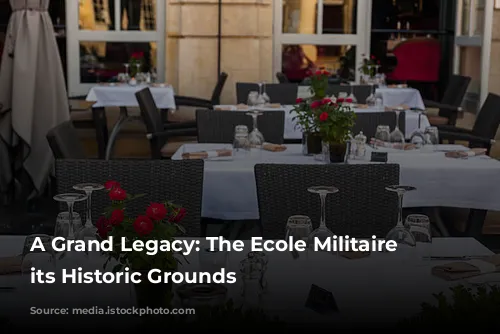The Ecole Militaire, a prominent symbol of French military prowess, boasts a rich history entwined with the grand Champs-de-Mars. This esteemed institution, initially envisioned as a school for young gentlemen of limited means, has witnessed the rise and fall of empires, playing a pivotal role in shaping French history. Its journey begins in the mid-18th century, with the Marquise de Pompadour and the financier Pâris-Duverney advocating for its establishment.
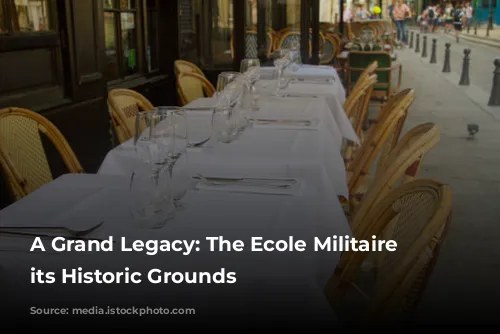
From Humble Beginnings to a Grand Vision
The dream of a dedicated military academy took shape in 1751 when Louis XV signed the decree for its creation. Architect Jacques-Ange Gabriel, tasked with designing the structure, aspired to craft a magnificent edifice surpassing the grandeur of the Invalides. However, financial constraints and ongoing wars hampered his ambition, forcing him to scale back his grand plans. Despite these setbacks, construction commenced in 1756, with the first students arriving in the partially built structures. The final approval of Gabriel’s plans, however, didn’t come until 1766, a decade after the school’s inception.
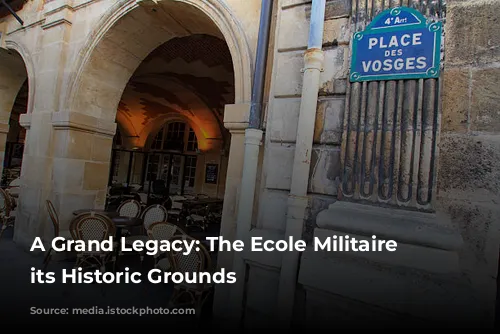
A Tapestry of Architectural Marvels
The completed Ecole Militaire emerged as a captivating blend of classical and neoclassical architectural styles. The impressive central pavilion, crowned by a dome and a Lepaute clock, served as the school’s heart. Its façade, adorned with eight Corinthian columns and statues depicting Victory, France, Peace, and Power, stood as a testament to the school’s commitment to military excellence. The intricate design, a testament to Gabriel’s vision, was further enhanced by the contributions of architect Brongniart, who continued the work after Gabriel’s departure. The addition of corner pavilions, marked with the inscriptions “Cavalry” and “Artillery,” during the Second Empire added further grandeur to the structure.

A Legacy Engraved in Stone and Time
The Ecole Militaire’s history is intricately woven with the grand Champs-de-Mars, a vast open space that served as a training ground for aspiring soldiers. The school’s courtyards, named after notable figures from the Grande Armée, including Westel, Garnier, Desjardins, Coquelin de l’Isle, Bernard, and Morland, stand as reminders of the institution’s role in nurturing military leadership. The presence of courtyards named after Berthier and Roederer further underlines its connection to the Napoleonic era. The Ecole Militaire, a center of French horsemanship since its inception, boasts a grand chapel, showcasing the artistic splendor of the Louis XVI period. The magnificent staircase and the salon des Maréchaux, though off-limits to the public, are a testament to the institution’s rich heritage. However, the library of DEMSAT (the Army Education department) remains open to all, offering a glimpse into the school’s past through period woodwork, paintings, and rare books.
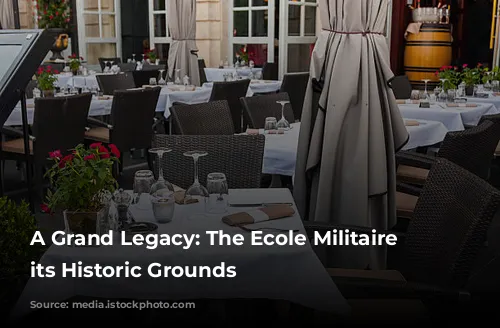
A Place of Honor: The Champs-de-Mars
The Champs-de-Mars, stretching down to the Seine, was initially reserved for vegetable gardens before becoming an essential training ground for the Ecole Militaire’s cadets. This sprawling field, capable of accommodating ten thousand soldiers in formation, played a vital role in shaping French military history. It witnessed the grandeur of military parades, the fervor of Republican festivals, and the pioneering efforts of early aeronauts. The Champs-de-Mars, a canvas for momentous events, hosted the Fête de la Fédération, the Fête de l’Etre suprême, and numerous First Empire celebrations, including the distribution of ‘Aigles’ and the Champ de Mai ceremony. This space also hosted early horse races, which continued until the creation of the Longchamp racecourse. The “Prix de l’Horloge,” named after the clock tower atop the Ecole Militaire, stands as a lasting reminder of the site’s equestrian heritage. The Champs-de-Mars, a symbol of French dynamism, hosted segments of the Universal Exhibitions of the 19th century before being transformed into a park. While its size was significantly reduced in the early 20th century, its legacy remains etched in the urban landscape, serving as a testament to the enduring spirit of France.
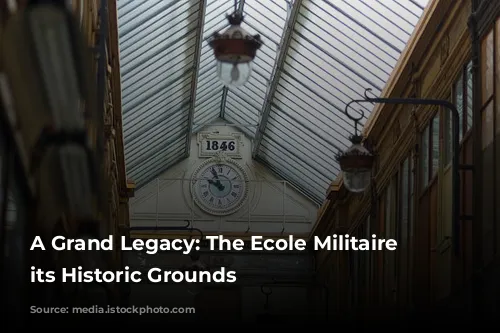
An Enduring Legacy
The Ecole Militaire, standing proud in the heart of Paris, continues to serve as a cornerstone of French military education. Its storied past, intertwined with the expansive Champs-de-Mars, underscores its profound influence on French history. From its humble beginnings as a training ground for aspiring soldiers to its role as a hub for military innovation, the Ecole Militaire remains a symbol of France’s enduring military tradition.
